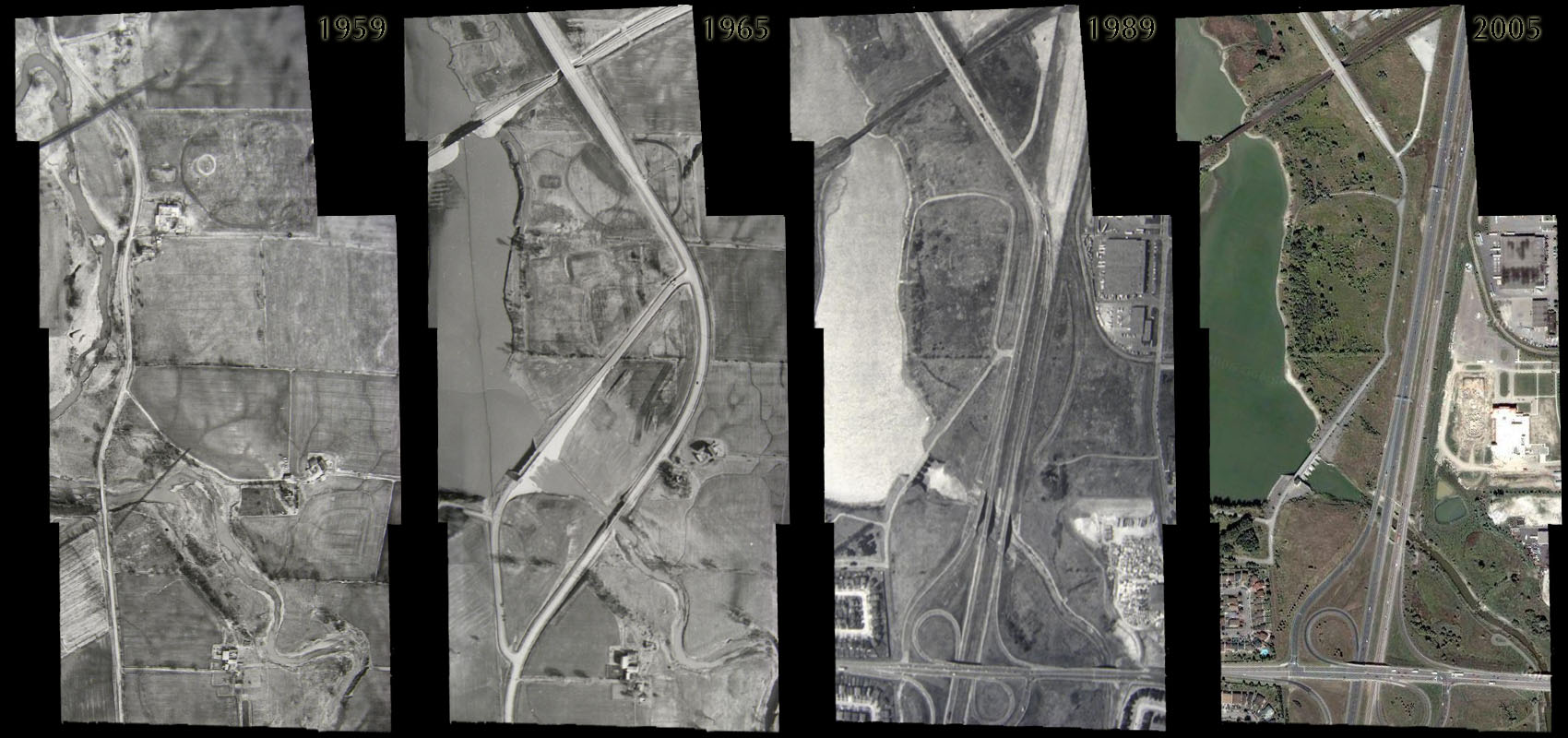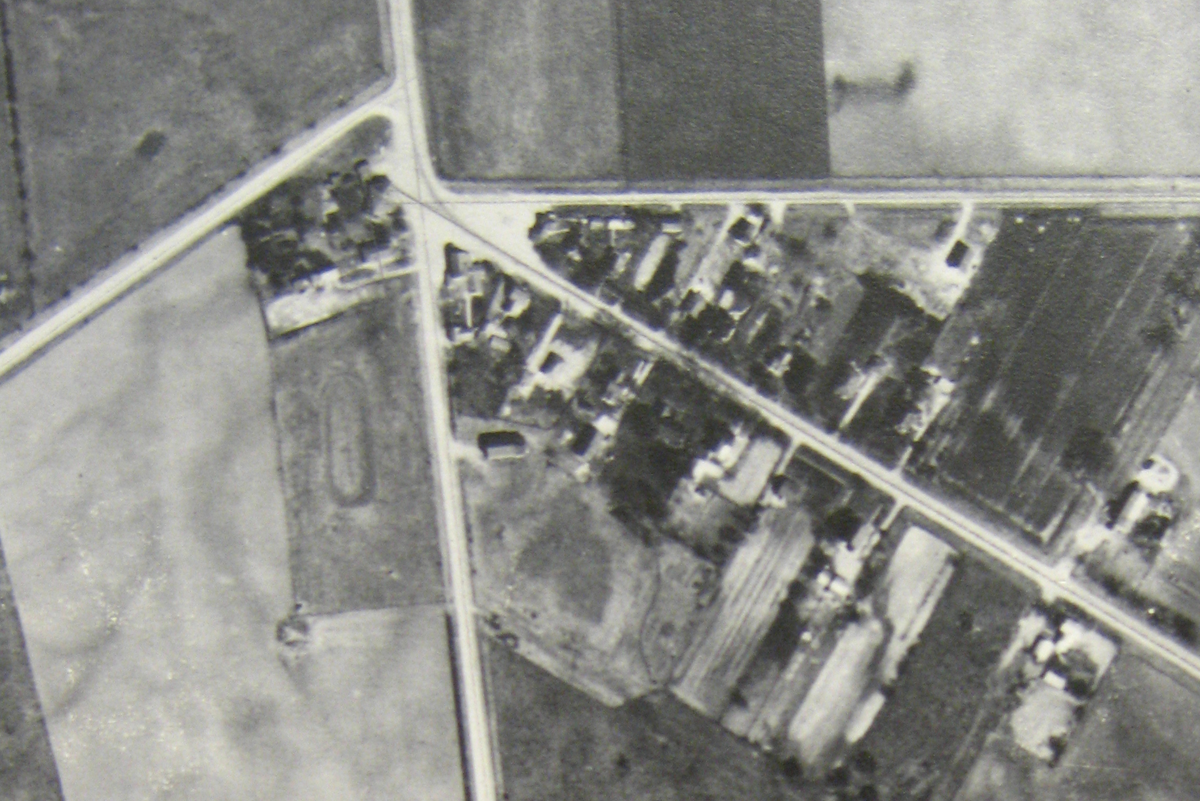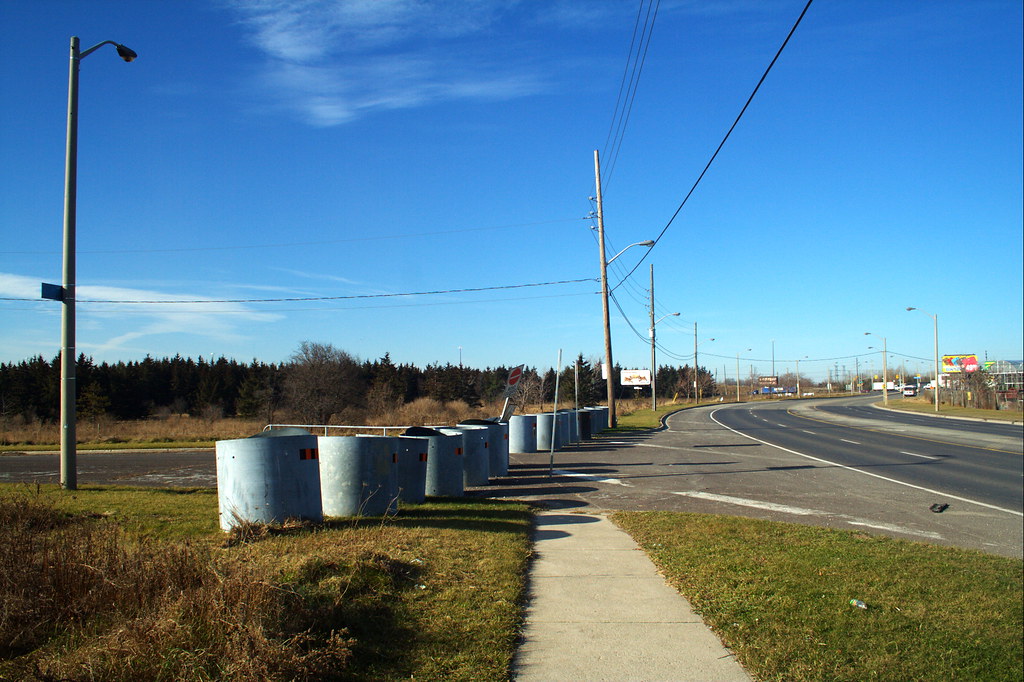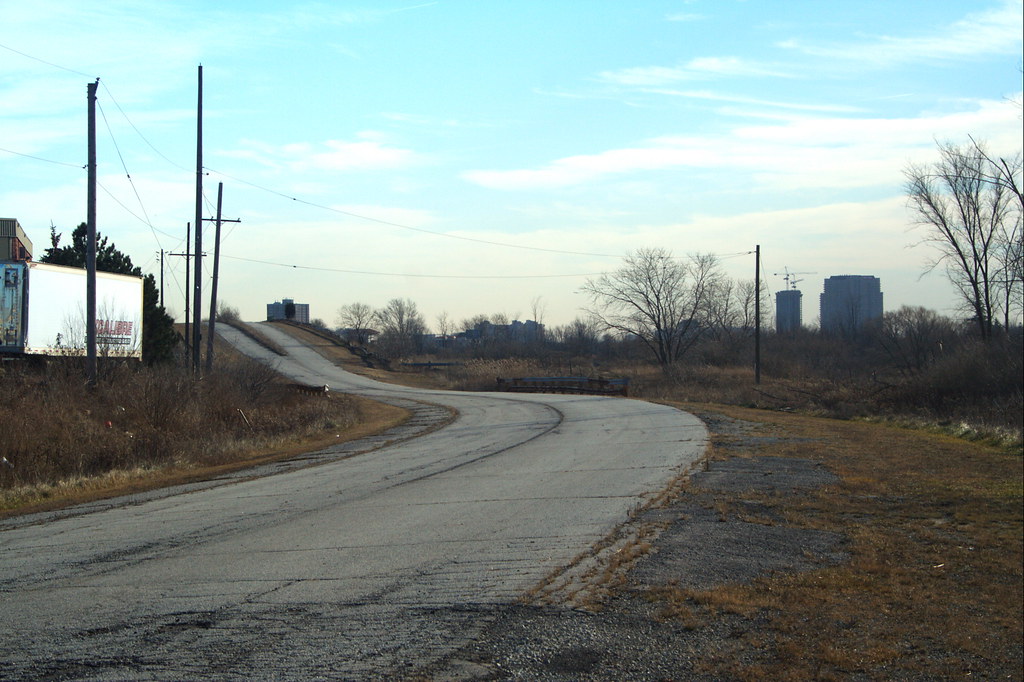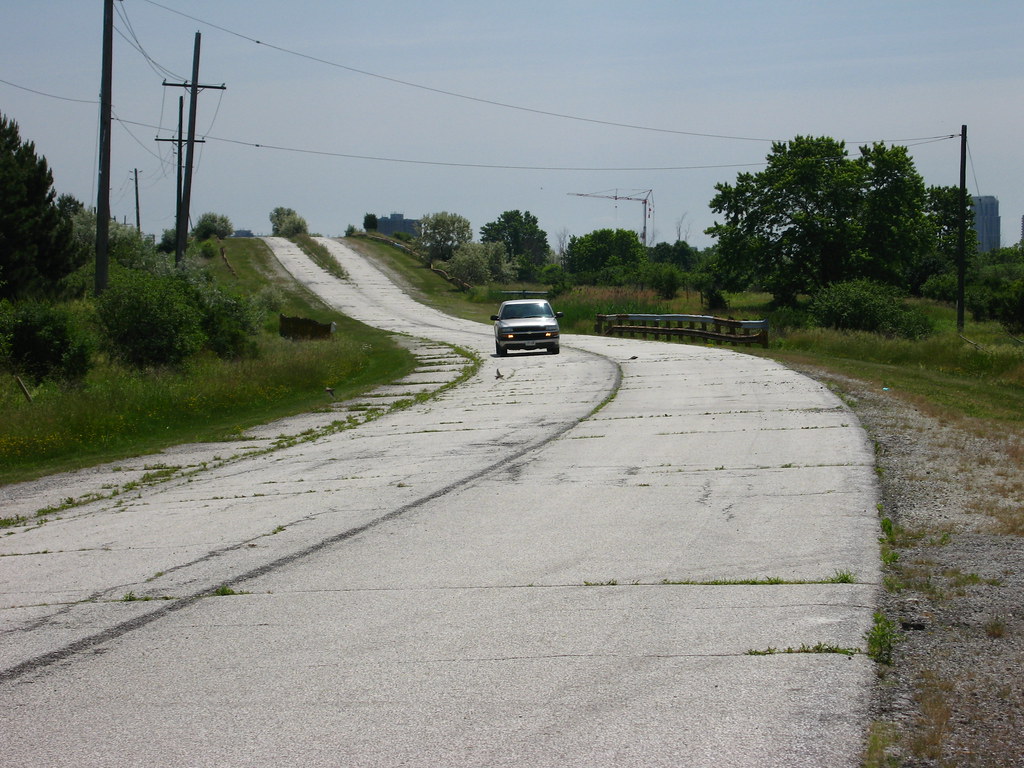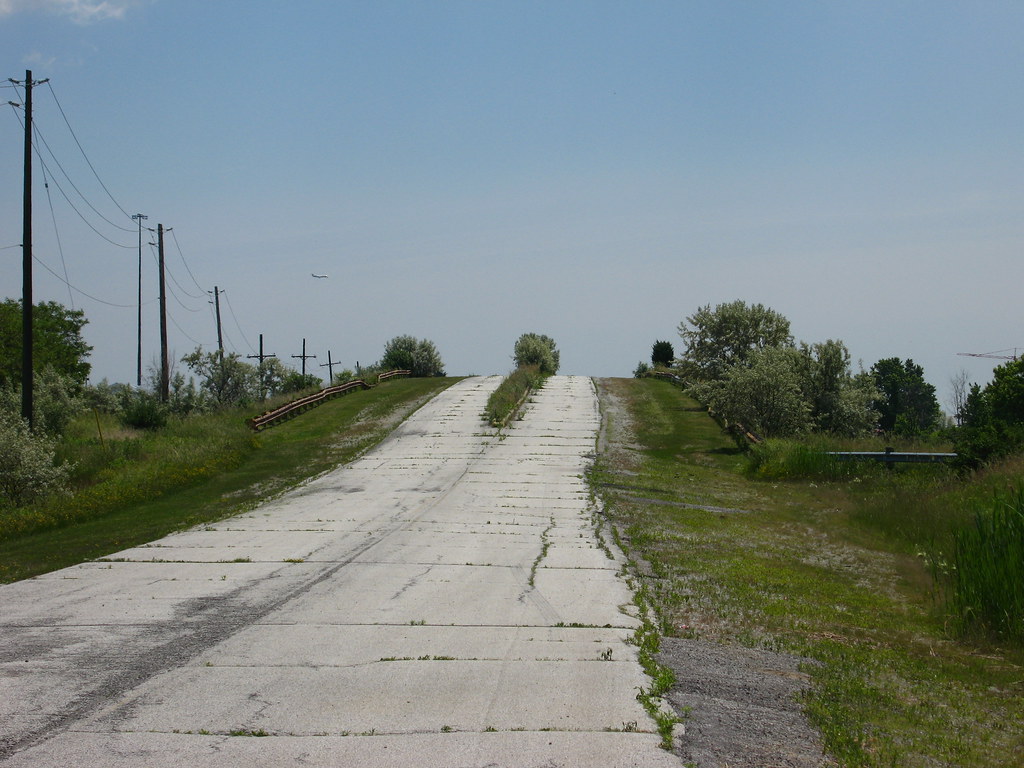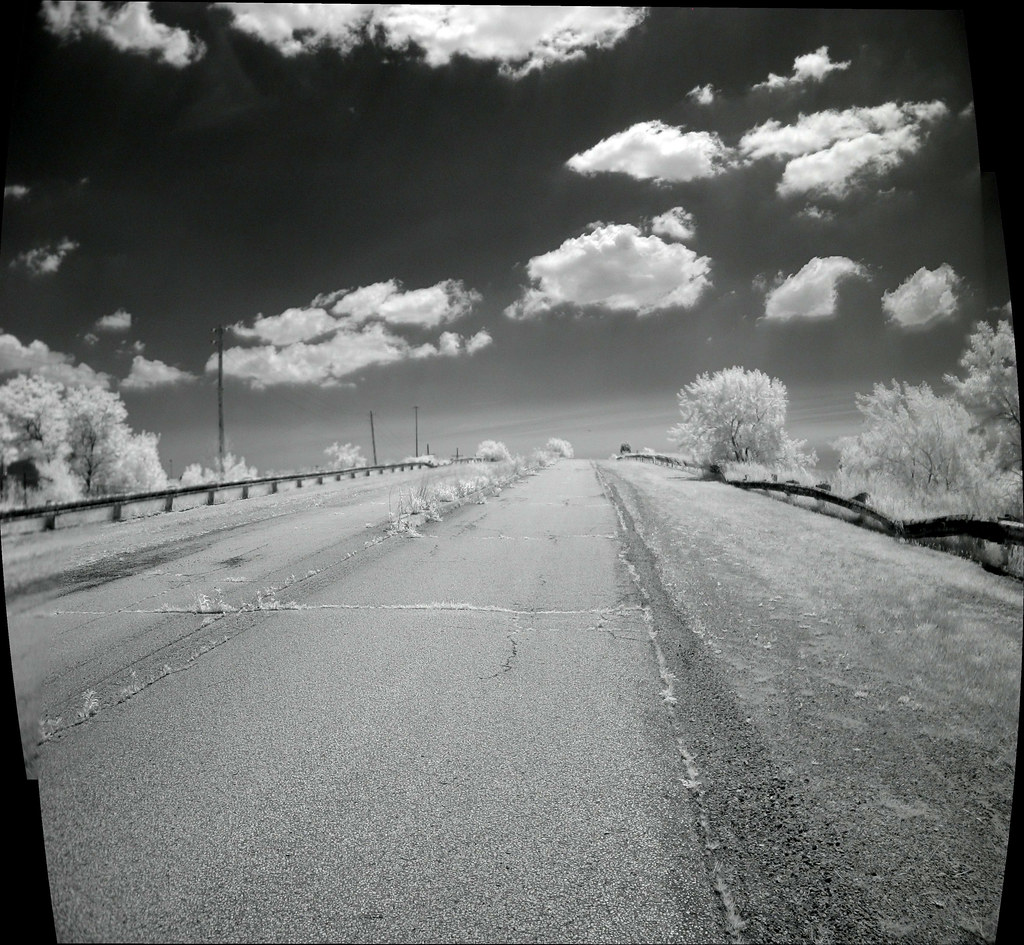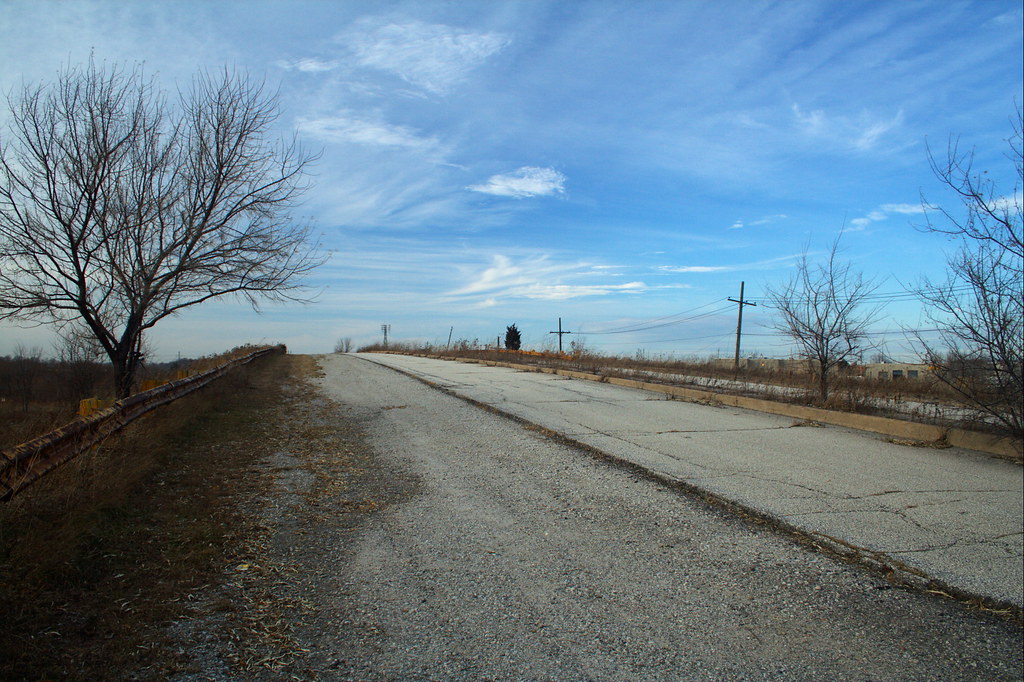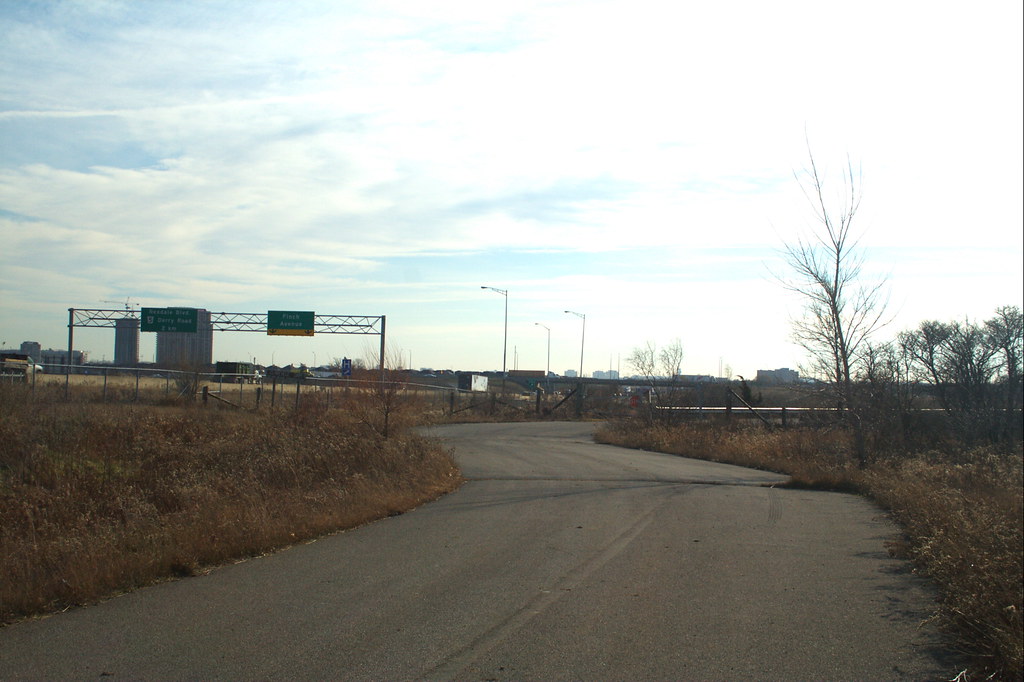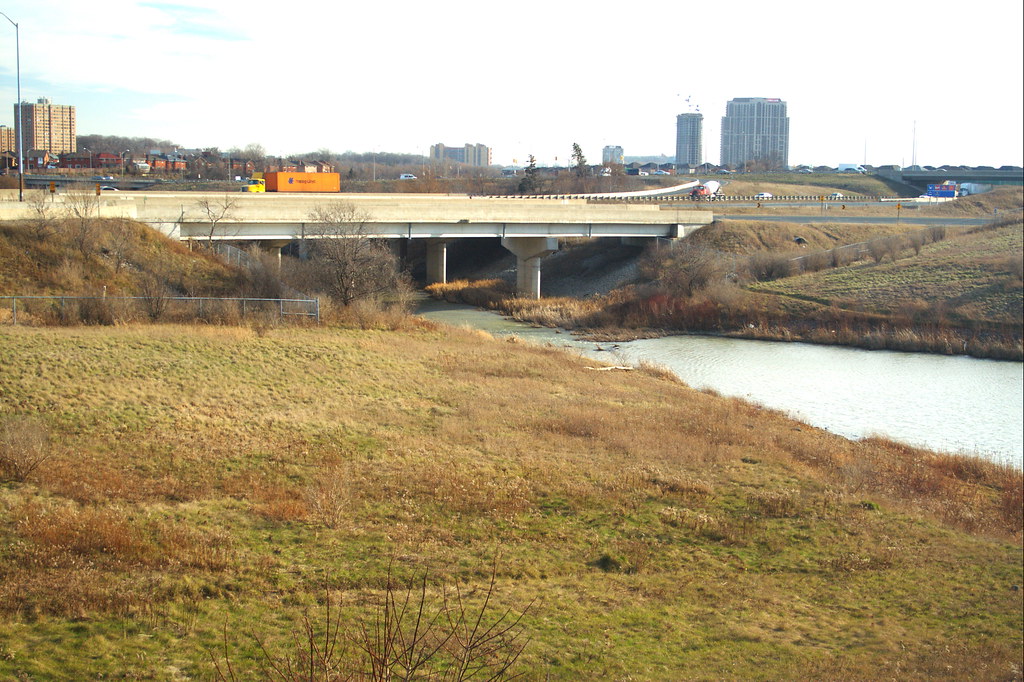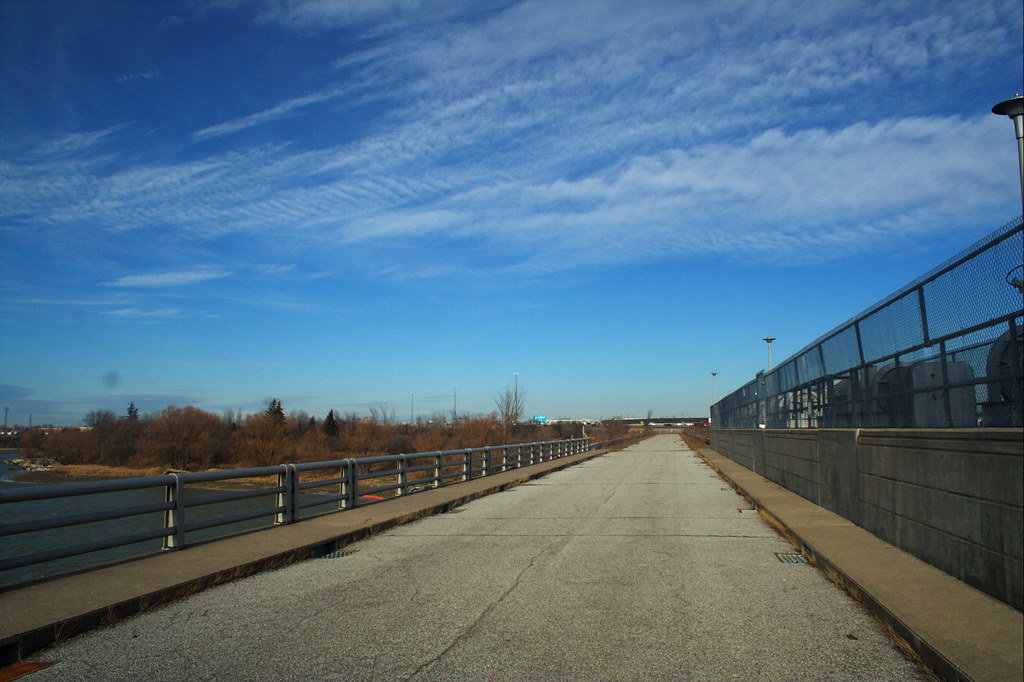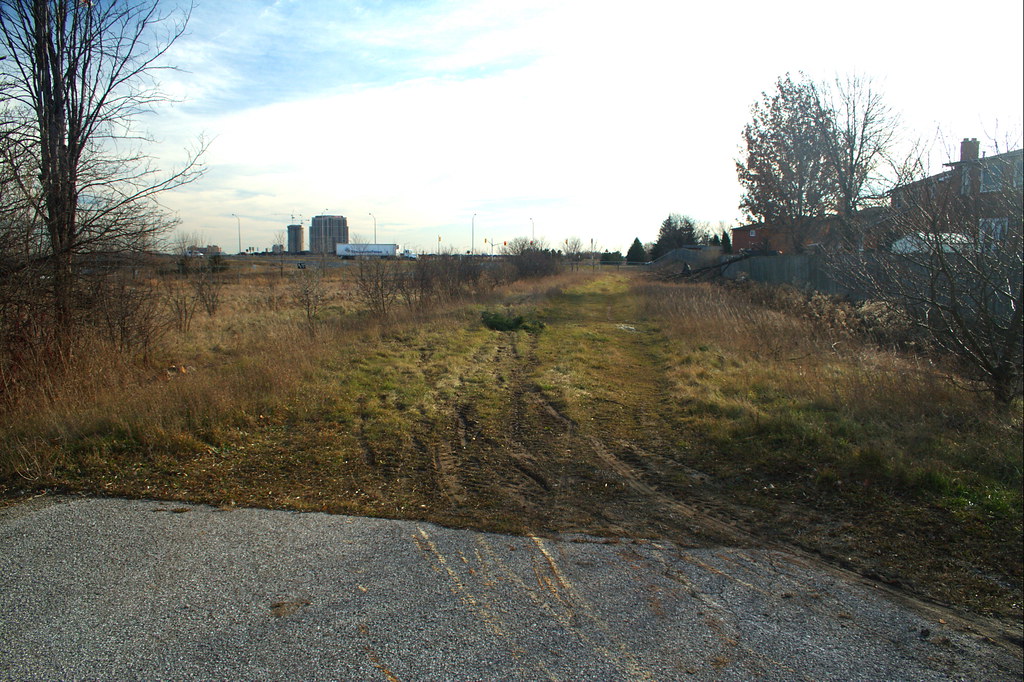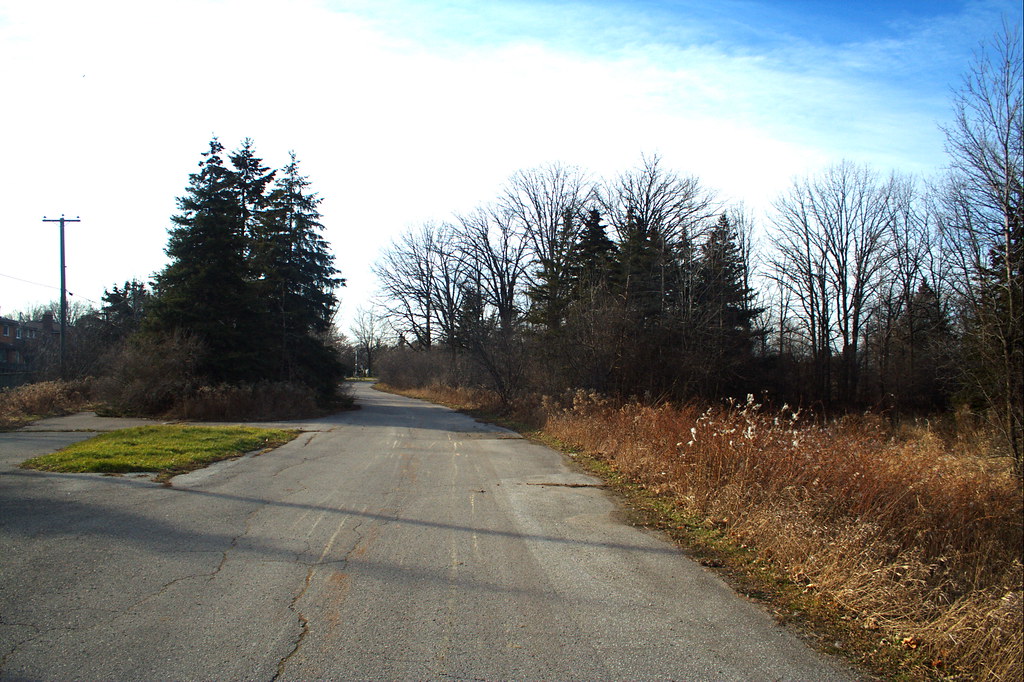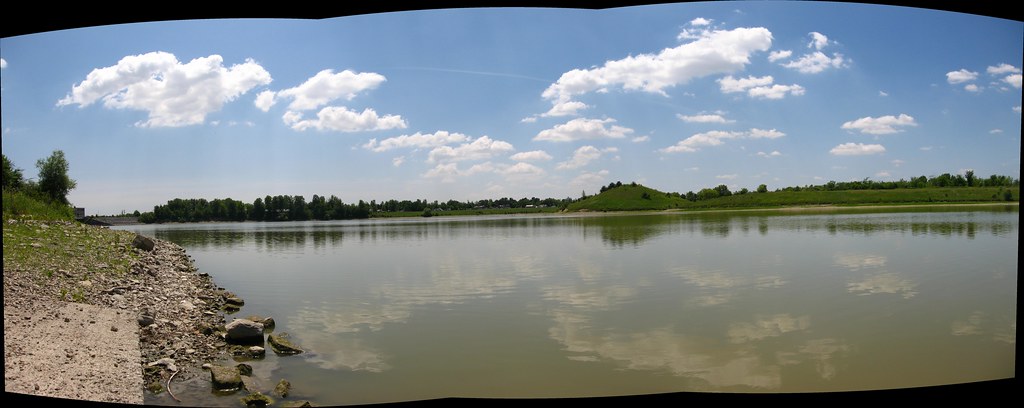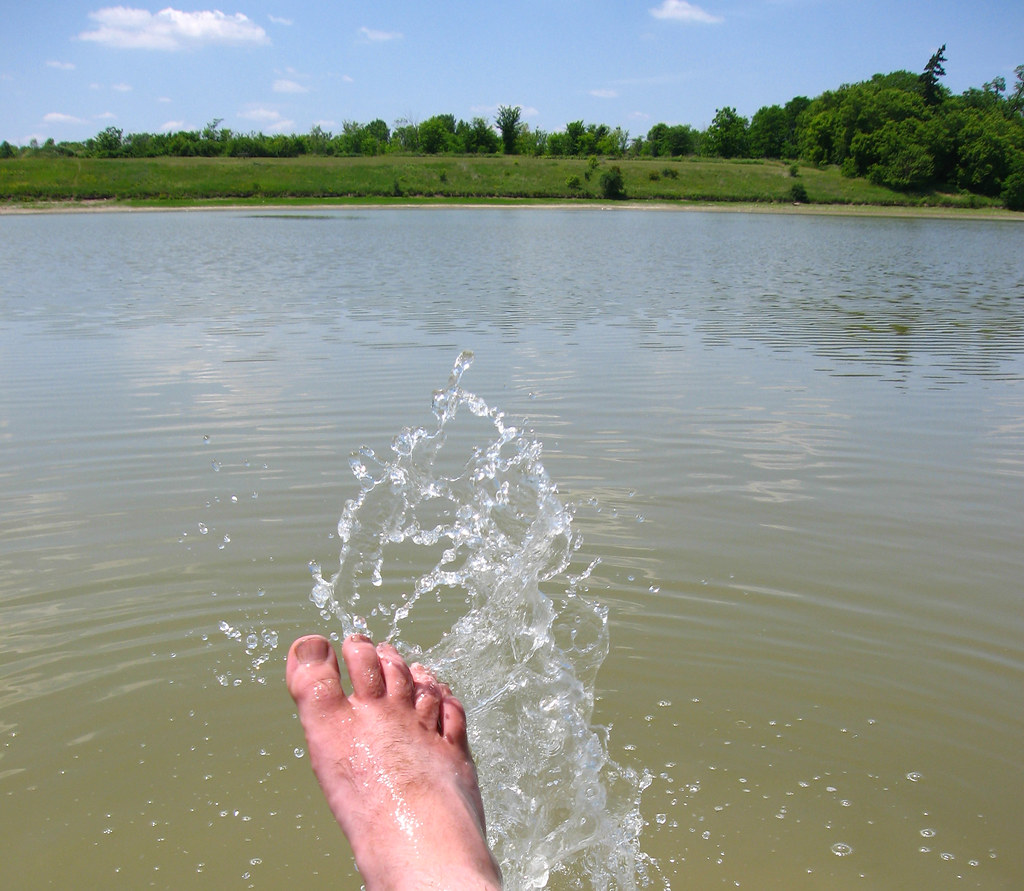Indian Line Road formed the border between York County and Peel County... effectively, Metro and Mississauga for most of our recent history, from Eglinton Avenue north. Slowly, over the years, its course has been assumed by the 427, and what remains of it is now Hwy 50; access to the route usurped by Albion Road.
North of where Finch Avenue now crosses it (but didn't at all until very recently), it's had a varied and tortuous history... diverted, flooded, pressed into service to a vast superhighway, and finally abandoned, officially removed from the road grid after a service of over a century.
I had my interest in the road peaked about a year ago, and I went out to explore it twice... in December of 2006 and June of 2007, as well as trips to the City Archives to investigate what was, as seen from the air...
Changes in Indian Line Road, in the vicinity of the West Humber River (and eventually the Claireville Reservoir) over time.
Here you're looking at the intersection... the rather complicated intersection... of Indian Line Road (north-south), Albion Road (diagonal from the lower right), and the dogs-legged Steeles Avenue of the day. This is, in fact, Claireville, 1959.
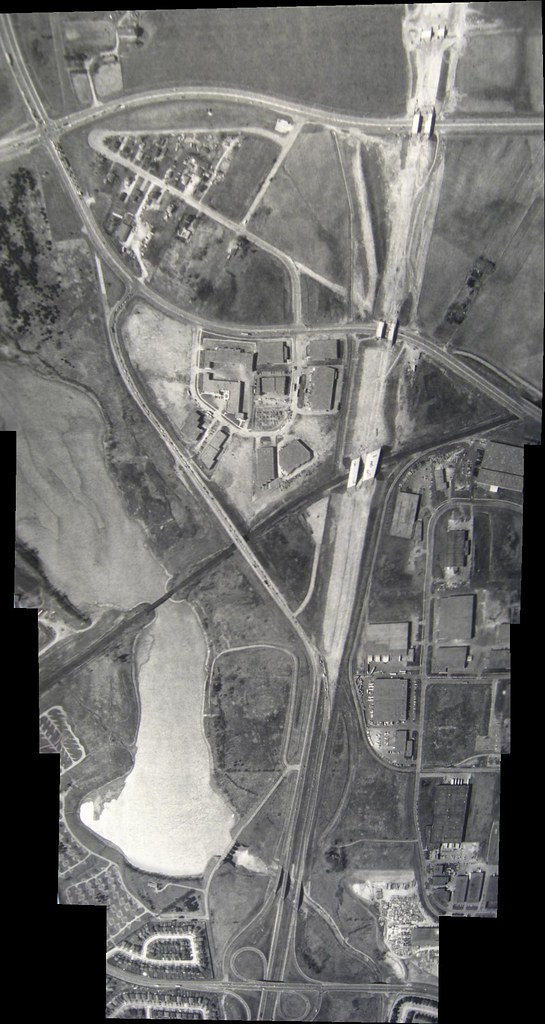
Thirty years later, in 1989, this is Indian Line Road at the height of its game. You can see how things have changed up at the top of the picture. Steeles is now contiguous, making a swoop north around Claireville. Albion Road, too, avoids Claireville, sweeping south around it. Indian Line Road has had its legs consumed by the advance of Highway 427 from the south, but even the mighty superhighway yields to the old road in the end, spilling its traffic out onto it, and gathering its first users from it. At the time, the 427 in the north used Indian Line to connect to the rest of the road system, ending up at the T-junction intersection of Indian Line Road and Albion Road that persisted up to about 1992 when the 427 was extended to Highway 7, abandoning Indian Line Road for good. It was more or less at that time that Indian Line ceased to be a going concern.
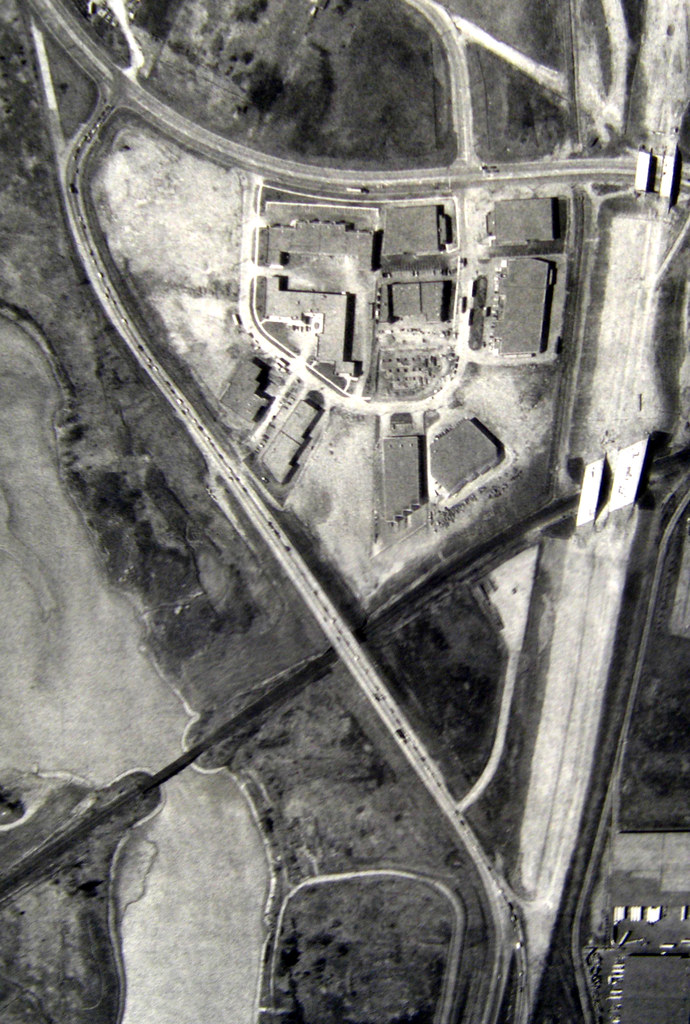
1989... the last couple of years Indian Line was employed. Look at the traffic on it, heading onto the 427, coming off of the 427 and lining up to turn onto Albion Road. It's hard to believe no one drives on this stretch anymore... it was so busy once, so integral to our city. I had once assumed that the lights at the intersection of Indian Line and Albion had been removed when Indian Line was closed to traffic in 1992, but I was astounded last week when I came across a recommendation from an Etobicoke citizens group last week that recommended, in 2002 (!) that the lights be removed because they no longer served any useful purpose and were, in fact, according to the testimony of a local fire captain, being routinely ignored by motorists. Such is the hold this road has had on us.
Indian Line at Albion Road, December, 2006.
Approaching the Indian Line bridge over the railroad tracks, December, 2006.
The same view in June, 2007... and look! Traffic! Indian Line rides again! This was a service vehicle.
This bridge is enthralling. You can glimpse it from the 427 even today. It carried Indian Line over the railroad tracks. Built in the 1960s, it was clearly designed with a big future in mind... wide enough for four lanes, but it never got them. Even when Indian Line was effectively a stretch of the 427, even then... this bridge carried only one lane of traffic each way. What a sad waste.
Heading up the bridge in infrared in June, 2007.
Looking back up the same bridge in December, 2006.
This view shows pretty much what you would have seen heading onto the 427 in 1990.
Heading towards the road that cross the dam, you can see the 427 bridge over the West Humber. Prior to its construction, that spot was essentially where Indian Line once made a wide sweep and had its own bridge crossing the West Humber in the 1960s.
This is the road over the dam. It's a bit deceptive because it faces back towards the 427 from the far side. North is on the left in this shot.
This is just a few dozen yards north of Finch Avenue. What you're looking down was once the arrow-straight south track of Indian Line Road. If you look really closely, you can see a guy cutting up a fallen tree just outside the fence of one of the back yards.
Indian Line Campground is still a going concern. Thirty years ago, this was how you entered it... off Indian Line, aptly enough. Well, you can't enter the campgrounds this way anymore. Today, the entrance is off Finch Avenue... which didn't come anywhere near here thirty years ago. How times change.
If you head towards the reservoir, you will find the original, 1800s route of Indian Line Road, skirting the very edge of the water (towards the dam, it's actually inundated by it). This is the view you find. On the far side is Indian Line Campground and Wild Water Kingdom.
Splash! The reward for all my hard work.

 I posted it in the Ontario highways thread.
I posted it in the Ontario highways thread.I posted it in the Ontario highways thread.
